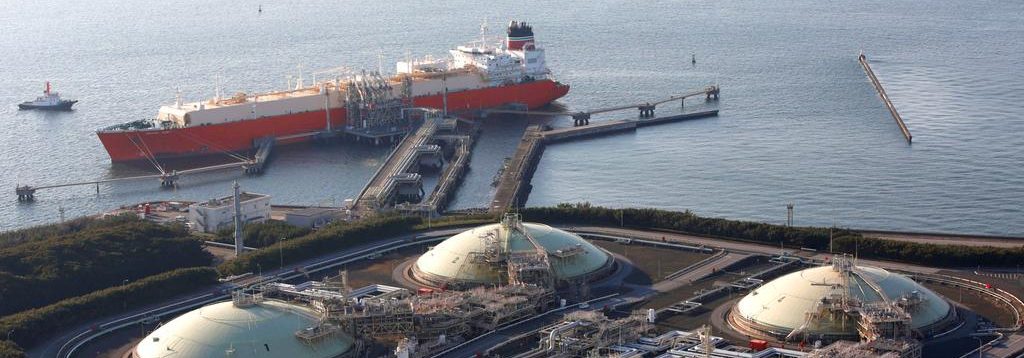
Asian spot LNG prices are at a four-year seasonal high and now sit above 2014 winter peaks after a hot summer depleted storage in Japan and an earthquake in the Asian country last week disabled a coal-fired electricity operation. Reuters file photo by Issei Kato.
LNG prices supported by crude oil
Asian spot LNG prices rose slightly this week on rising demand ahead of the winter season and an earthquake in Japan caused the worst power outages in years last week.
Market sources told Reuters that spot prices for October LNG-AS delivery climbed to $11.55 per million British thermal units (mmBtu) this week, 5 cents higher than the week prior.
These prices not only hit a four-year seasonal high, but they also rose above winter peaks from 2014 onwards, according to Reuters data.
While the number of trades this week were few, LNG prices were supported by increases in oil prices which were boosted by Tropical Storm Gordon as it barrelled towards the US Gulf Coast.
Another factor driving up prices is the constant demand for LNG in Asia as countries are now preparing for winter and hoping to avoid similar price spikes that were seen last winter when temperatures hit unexpected lows.
As well, in Japan, heatwaves this past summer depleted LNG storage levels and officials are now scrambling to rebuild inventories before winter hits. One trader told Reuters that September imports may be higher than a year ago.
Last week’s 6.7 magnitude earthquake that struck the northern Japanese island of Hokkaido disabled a coal energy plant and triggered a blackout.
China is also bumping up its supply. State-run CNOOC is opening its LNG terminals to third parties and Beijing is looking at offering subsidies to encourage natural gas storage and tax rebates for LNG imports.
Reuters reports that in South Korea, Korea Midland Power Co Ltd., (KOMIPO) is looking for an LNG cargo delivery between Nov. 16 and Nov. 21 in a tender that closes on Sept. 10.
Another South Korean buyer is looking for cargoes to be delivered over 5 to 10 years, according to two Reuters trade sources.
Saibu Gas, a Japanese company, is in the market for one cargo every quarter for delivery beginning in 2019 to early 2022 and is hoping to award the deals in October, according to Reuters industry sources.
Russia’s Yamal LNG plant is offering cargoes for winter delivery to Asia, according to traders. It is not clear how many have been sold.
Yamal production has ramped up more quickly than expected. Reuters reports three newbuild arctic-classed LNG carriers are about to set sail for the facility. This would take the number of vessels working from Yamal to 10.
Feedgas flowing into the Cheniere Energy’s Sabine Pass train 4 terminal dropped this week, possibly indicating an outage at the 4.5 million-tonne-a-year plant.
A displaced pipeline has also restricted passage for vessels entering and leaving the Sabine Pass Channel. The US Coast Guard blocked the entry of one LNG tanker and the departure of a second.


Be the first to comment